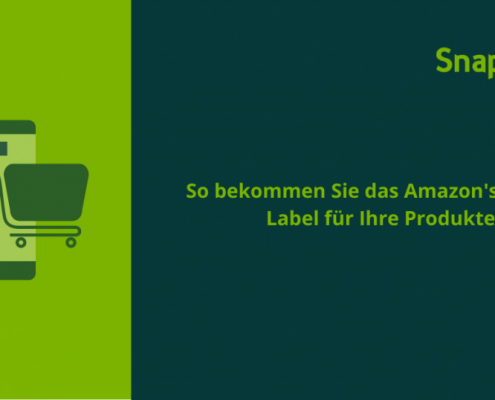Customer-oriented pricing: duel or duet?
In recent years, the majority of e-commerce retailers have internalized that the user’s sphere of activity is the key to the success of an online shop. While it is unquestionably hard work keeping the e-commerce business going, merchants must constantly throw in new ideas and strategies to achieve growth and customer satisfaction. In addition to customer loyalty, the right, customer-oriented pricing strategy is one of the most important criteria. Fortunately, there is the possibility of killing two birds with one stone. It seems reasonable to adjust the price to the expectations of the retailer while at the same time taking into account the needs of the consumer. You can read in this blog post why and with what means retailers can structure their prices in a customer-oriented manner without losing margins.

But what is a customer-oriented pricing strategy anyway?
The customer-oriented pricing strategy is about precisely determining and balancing what price the customer is willing to pay, taking into account the price that the company wants to achieve for the goods. The main focus in the development of the price is on the customer. In order to find out what price customers are willing to pay at all, retailers have to take targeted measures. In e-commerce, many retailers tend to use surveys. With the help of various online marketing measures, these surveys can also be carried out relatively easily and a large number of people can be addressed so that a valid evaluation is possible. Ideally, these surveys should take place before the product is launched and should be repeated later. Here it is important to bear in mind that the experiences that customers have with the product change the price perception and the willingness to accept certain prices. In this context, e-commerce retailers should consider the following questions:
- is the customer willing to pay this price for the product?
- up to what price is the customer willing to buy the product?
- what price would the customer want to pay for the product on their own initiative?
Customer loyalty through customer-oriented pricing policy
In view of the great importance that the price has for many customers, a customer-oriented strategy is a particularly important task in customer loyalty management for retailers. Because only those who manage to see through the price awareness of their customers and then use this knowledge to design their price policy in a customer-oriented manner will in future be able to satisfy their customers in the long term and to bind them to their product and service. The good news here is that the implementation of appropriate price policy marketing measures is usually associated with only comparatively low costs and thus offers an interesting field of activity. But is it even possible to combine two opposing goals between willingness and interest? Because while the pricing policy aims to siphon off the customers’ willingness to pay as much as possible and thus generate the highest possible turnover – while the interest of the customers is to achieve the best possible purchase price. This shows that the customer-oriented pricing policy offers the potential to build customer loyalty if the price is defined from the customer’s point of view rather than from the retailer’s point of view.
Price optimization in online trading – a curse or a blessing? In this blog post we clarify!
- Price perception from the retailer’s perspective
- From a retailer’s perspective, a price bid has two goals. On the one hand, it must of course cover the internal costs associated with the entrepreneurial activity, and on the other hand, it optimally generates a planned profit. However, this cost-focused perspective from the company’s point of view neglects one thing: the subjective price perception on the customer side.
- Price perception from the customer’s point of view
- For a customer, the price is what he has to pay to buy a product. However, these costs do not end – as from the retailer’s perspective – with the purchase of the product. Rather, they often just begin and extend over a longer period of time. As a result, it is not just the selling price that is decisive, but all expenses associated with the product and its use.
In addition to the costs for the product and its use, the customer also incurs additional expenses in the course of the procurement of goods. In brick-and-mortar retail, for example, this applies to the costs and effort involved in driving to the point of purchase, the parking fees incurred on site, obtaining price comparisons and delivery costs (preferably in e-commerce). A customer-oriented pricing policy therefore takes into account the subjective price perception of customers. In doing so, she sees the price as a marketing tool to solve problems related to the price and thereby gain corresponding preferences from the customer. Accordingly, the preferences gained can bind customers more closely to the retailer and the company.
Examples of customer-oriented pricing
- If the purchase price is based on a promised effect instead of the product, for example in systems and consulting transactions, the supplier himself assumes the customer’s usage risks and thus increases their willingness and confidence to pay.
- Some markets allow the product to be enriched with additional services and both to be marketed together. Beverage manufacturers offer a service for private and business customers in which a defined selection and number of beverage bottles can be delivered to your home or office for a fee. The manufacturers take on the entire logistics, from delivery to collection of the bottled goods. The customers’ reduced procurement costs then have positive customer loyalty effects.
- Flat-rate prices, as we know them from the telecommunications industry, for example, at which the user can purchase as many units as he wishes for a fixed amount, offer many buyers security from unpleasant price surprises. Many buyers are prepared to accept a higher price for this corresponding security. Here too, price satisfaction increases and with it customer loyalty.
- If a retailer sells several heterogeneous goods in one package at a total price, one speaks of price bundling. If the total price is usually lower than the sum of the individual prices, the bundling of prices also leads to increased price satisfaction and thus to higher customer loyalty.
- Clearly comprehensible pricing, such as that found in shopping cart configurators in e-commerce, for example, and which lets the buyer know at any time what the selected configuration costs, reduces the buyer’s fear of hidden costs and also increases price satisfaction.
Conclusion
In summary, one can say that providers with a customer-oriented pricing policy can specifically influence the price satisfaction of their customers and thus increase customer loyalty without selling below the margin. The biggest advantage compared to other measures to promote customer loyalty is that not even high investments are necessary. The most important prerequisite, however, is a profound knowledge of the price behavior of the relevant target group. Customer loyalty should therefore be the focus of your business and increase economic success, because: loyal customers buy more often, loyal customers buy more and higher quality, loyal buyers are more generous, loyal customers are immune to other providers, loyal customers act as free sellers.










